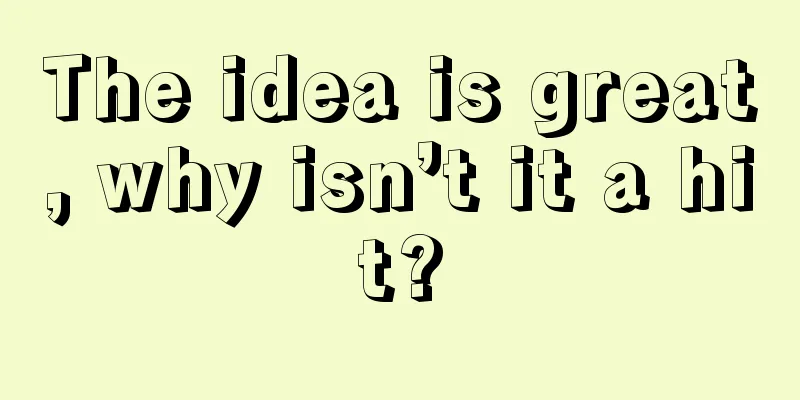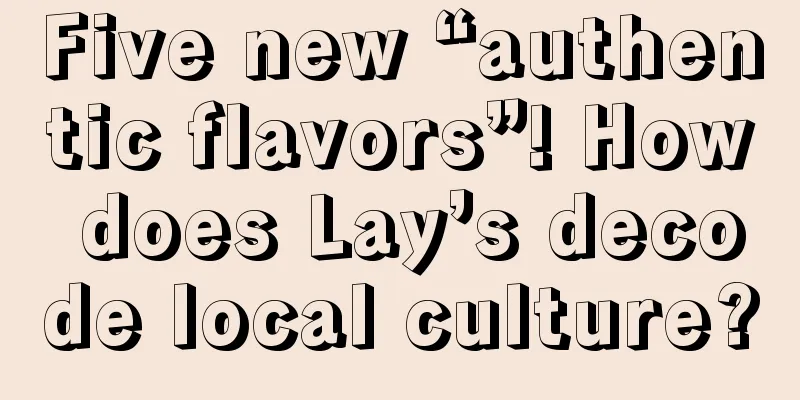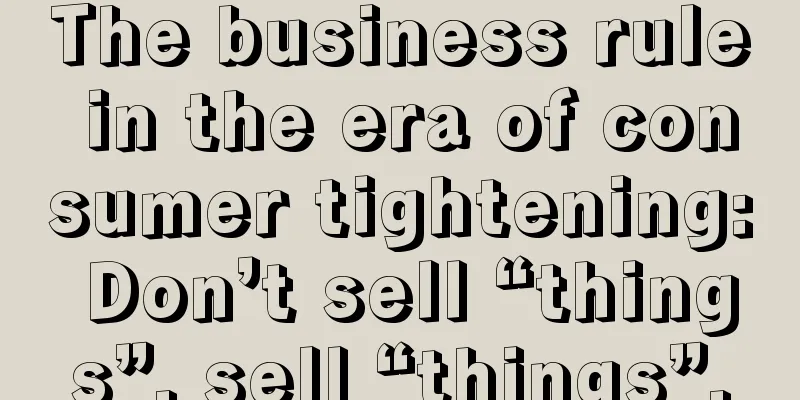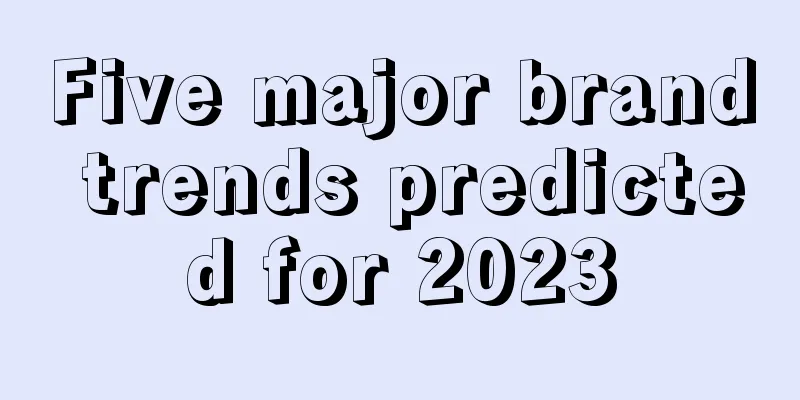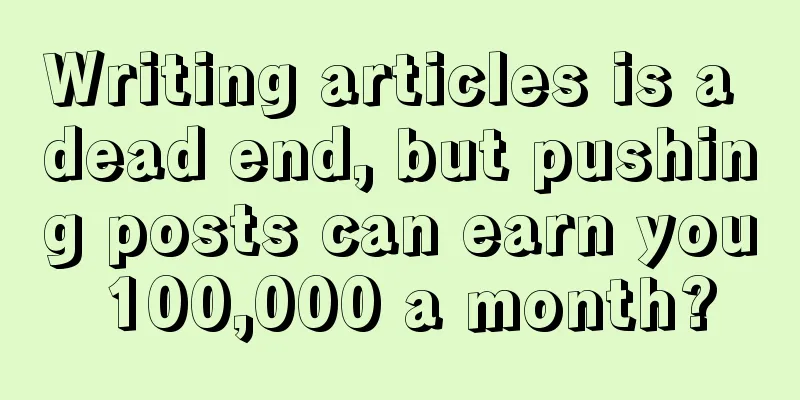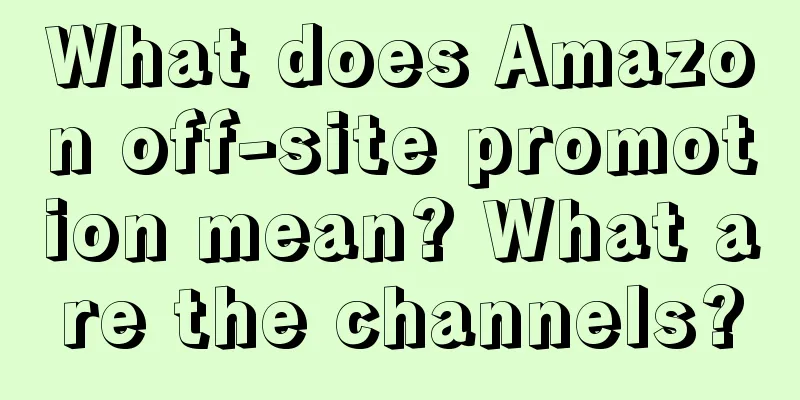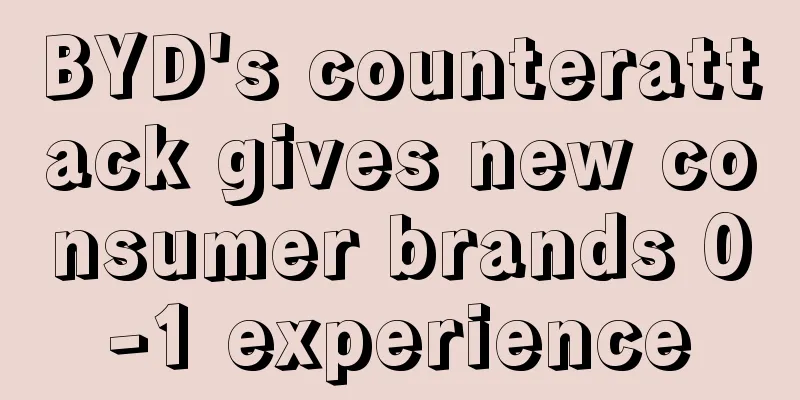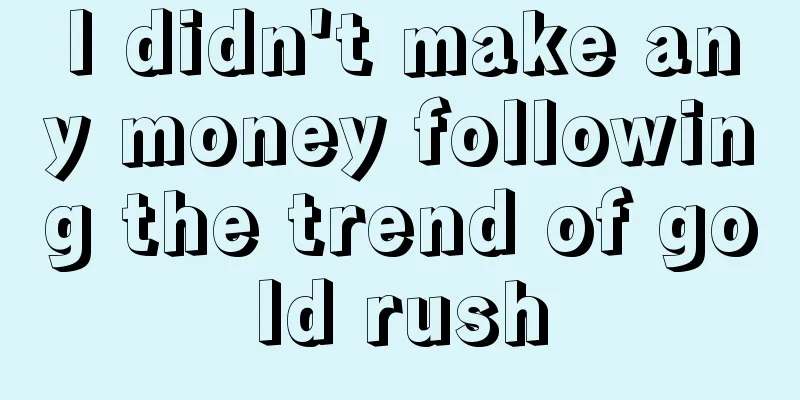i-person and e-person marketing strategy: How brands can seize new opportunities in personality marketing
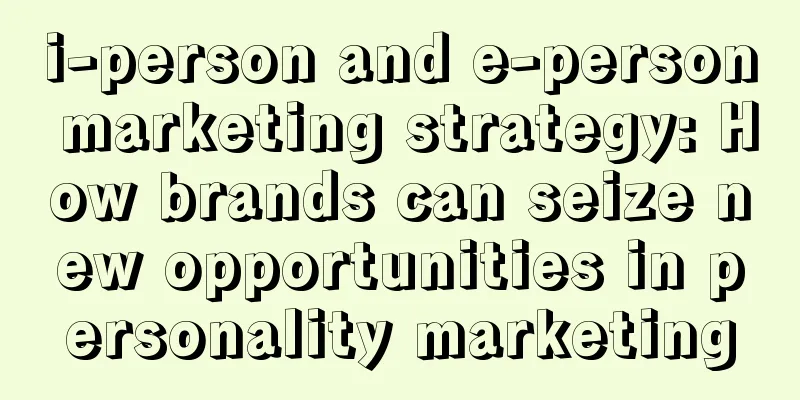
How do i people and e people behave differently when they get together? What are the differences between i people and e people at work? What is the difference between i people and e people when taking photos when traveling? Recently, the topic of i-people or e-people has become a hot topic on the Internet, and these topics have become a powerful weapon for bloggers to control users. Data shows that in the second quarter of 2023, the number of views of its parent topic MBTI on Xiaohongshu increased by 4239.67% month-on-month, and related posts also increased significantly. The number of views of related topics on Douyin exceeded 3.2 billion. This trend is not only reflected in hot topics on social media, but also in brand marketing activities. More and more brands are beginning to market to i-people and e-people. Lane Crawford launched two different gifting methods for E-people and I-people on Chinese Valentine's Day, recommending suitable gifts and attracting everyone to receive limited-time surprise gifts on Chinese Valentine's Day. Volkswagen simulated the process of traveling, "swiping left" to see the choices of i-people, and "swiping right" to see the choices of e-people, to promote Volkswagen ID.6X smart car connection. Why are iRen and eRen and the marketing targeting them so popular? This needs to start with its origin. 1. What is iRen eRen?I people and E people are two different personality types, which are divided based on the theory of MBTI (Myers-Briggs Type Indicator). MBTI is a personality test designed to determine a person's personality type, strengths and preferences. MBTI has four dimensions, namely extraversion (E) and introversion (I), sensing (S) and intuition (N), thinking (T) and feeling (F), judging (J) and perceiving (P). Everyone has a type composed of these four letters, such as INTP, ESFJ, etc. The difference between I people and e people lies mainly in the first dimension, namely extroversion and introversion, which is somewhat similar to what we usually call introverted or extroverted personality. Generally speaking, extroverts prefer to communicate with others, participate in various activities, and express their thoughts and feelings; introverts prefer to be alone, think about problems, and immerse themselves in their own interests and imaginations. Extroverts are usually more adaptable to changes and like diverse experiences; introverts are usually more focused on in-depth exploration and like a regular life. Initially, MBTI was widely used in business, education, consulting and other fields, and later became popular among ordinary people. With the attention of social networks to MBTI, it has become a new way for young people to express themselves and communicate with each other. More and more people classify themselves as a type in MBTI and share it on the Internet. The popularity of MBTI is not surprising. Similar personality tests have actually existed for a long time and have been popular for a while, such as the DISC personality test (dominance, influence, stability and compliance), the Big Five personality traits (openness, conscientiousness, extraversion, agreeableness and neuroticism), the Enneagram personality test, and so on. More than 20 years ago, the Enneagram personality test was also very popular. In that era without social networks, people passed it on by word of mouth and used it to see what kind of personality they had. Many books on the Enneagram personality test were published every year. Using personality tests to judge users has always been effective. The fundamental reason why this type of personality test is so popular is the social labeling theory. 2. The essence of the popularity of iren and eren - social labeling theoryIf you look closely at the NBTI theory, you will find a problem. This personality test has four dimensions, but only introversion and extroversion are popular, while the other three dimensions are far less discussed. Of course, the superficial reason is that the dimension of introversion and extroversion is easier to understand than the other three dimensions - feeling and intuition, thinking and emotion, judgment and perception, so everyone has a stronger sense of identity and participation. The deeper reasons can be discussed from the perspective of social labeling theory. Social labeling theory was mainly proposed by sociologist Howard Beck in the 1960s. This theory mainly explores how society classifies and defines individuals through labels, and how these labels affect the behavior and self-perception of the labeled individuals. Labeling theory emphasizes that individuals who are labeled by society may change their behavior because of this label to conform to the society's expectations and prejudices about this label. There’s an old proverb that says, “ I am my brother’s enemy, my brother and I are our cousins’ enemies, and we are all our enemies. ” This quote beautifully illustrates how we often like to divide the world into “us” and “them.” Psychologist Tajfel found that when we divide people into different groups, our brains automatically magnify the differences between us and them and ignore the similarities. We like to see the people in our own group as different individuals, and see the people in the outside group as cast in the same mold - "they are all the same." Tajfel conducted an experiment in which he randomly divided some people who did not know each other into two groups, called "Group X" and "Group W". These people had no interaction in the experiment and did not know who the other person was. But strangely, they behaved as if they were good friends with the people in their group. Not only did they like the people in their group more, but they also thought that the people in their group were smarter and more reliable. They were even willing to give more rewards to the people in their group. This is what we often call the "labeling effect." Once we label a group, we tend to assume that everyone in the group has some common characteristics, no matter how different they actually are. In the cases of i-people and e-people, they will classify themselves into one of them, magnify their own characteristics in it, and distinguish themselves from the other type of people. Especially for i, I have always been looked at strangely since I came into contact with others at a young age. People always think that I don’t like to communicate and am a little autistic, which is not a good character. When people discover that there are so many similar people in the world and that many of them are excellent, they find resonance and amplify it. The nature of i-people and e-people is consistent with social phobia and social bullies. i-people used to be socially phobic. The topic of social phobia has been very popular in the past few years, especially the case of the Finns, which was popular on the entire Internet. Someone posted a picture saying that when the Finns were waiting for the bus, they would rather be covered in rain and snow than get close to other people. There is a book called "The Finnish Nightmare", a comic book created by Finnish graphic designer Karolina Korhonen. It explores the social phobia and introverted personality of the Finns through humor and simple painting style. The book is popular around the world, especially in China and Japan, where the main character, Matti, and his social phobia resonated with many people and even sparked a "Jingfen" craze on the Chinese Internet. Judging from past cases, i-people and e-people are best classified in combination with social labeling theory. This topic is already very popular, but it is discussed on the Internet under different names. 3. How to do i-person and e-person marketing well?When the topic of iRen and eRen became the top trend on social networks, more and more brands noticed the value of this topic and began to use it for marketing. So how to do marketing about iRen and eRen? 1. Enlarge the label featuresi person and e person are obvious classifications that utilize the social labeling theory. As mentioned above, once a person classifies himself into a certain group, he will magnify his own characteristics in it and distinguish himself from another type of person. Brands can attract and maintain the attention of target groups by amplifying the characteristics of i-person and e-person labels. At the same time, brands that do so are also considered to be providing personalized services to users, thereby winning the favor of the corresponding groups. Haidilao divides the areas into i-people and e-people, which is a manifestation of this kind of marketing. Generally speaking, when people dine in a restaurant, their personalities will not be particularly obvious during the meal, but Haidilao has given a clear i-person and e-person label, which makes consumers feel identified and at the same time feel that the brand is caring. Haidilao is actually not the first to do this. A few years ago, Watsons launched a similar waiter and placed two labels at the entrance, targeting socially anxious people and socially stubborn people respectively. This service actually magnified the fact that people want to choose alone when shopping and do not want to communicate with others. At that time, this scene also became a hot topic on social networks. Brand marketing can also exaggerate the user's personality (of course, risks must be avoided). For example, an i-person sweatshirt exaggerates the label of i-person social phobia. The highlight of the clothing introduction is that it will not be seen by other people. When you see someone you don't want to see, you can just cover yourself up tightly. 2. Do a good job of product segmentationWhen brands sell to the market, they usually have to give users a fixed portrait. They usually target the mainstream population in society, but this portrait often excludes many of their customers. For example, the purchasing power of the LGBT community in the United States alone is estimated to be close to $1 trillion, but many brands do not have any differentiated products or initiatives for this market. Based on the four dimensions of MBTI alone, consumers can be divided into 16 market segments, each with its own personality traits and consumption characteristics. For example, INTP consumers may prefer logical, innovative, and high-quality products, while ESFJ consumers may prefer practical, user-friendly, and socially responsible products. Whether brands can have different product recommendations for people with different personalities is a question worth considering. If you search for MBTI on Taobao, you will find a theme about how MBTI dresses. You can find the answers to how i-person and e-person should dress respectively, and which brands and items will be more suitable for your personality. Such a setting will increase people's favorability. Last year, Rising collaborated with MBTI on a marketing campaign, using the MBTI test to see which type of coffee is more suitable for each person. This test is not scientific, but by combining certain characteristics of coffee with certain personality traits of MBTI, it achieves the effect of giving different people different coffees. 3. Create scene themesEveryone is changing. If you regard consumers as actors, they need different costumes, props and stage sets in different scenes and moments. Michael Solomon calls consumers "chameleons" who have multiple identities and sometimes change several times in a day. Similarly, a brand or product should provide different values in different scenarios to attract people with different personalities. In the music industry, traditional record companies often compile playlists based on music genres, such as hip-hop, country and classical. This practice is mainly because the industry and the media usually use these categories to count music sales and downloads. However, from the listeners' perspective, their music choices are often based on different scenarios and emotions in life rather than a specific music genre. For example, they may have several playlists in their music library: "Home Fitness Moments", "Sweet Memories of College" or "Happy Housework Time". In these playlists, the music selections usually span different music genres, including Rihanna's popular rhythms, the Beatles' classic melodies, and even Taylor Swift's sweet melodies. This diverse music mix reflects the listeners' various music needs in different scenarios, and also provides brands with a unique perspective to design and promote music products that are closer to the actual needs of consumers. On QQ Music, someone has created different playlists for different people based on MBTI, which of course attracts people with this personality. This summer, Ele.me conducted a marketing campaign targeting the scenario of buying milk tea in the workplace. One of the copywriting ideas was "do e for i". This copywriting used the hot discussion topics at the time to construct a relaxed and enjoyable social scene, helping people break down barriers in the workplace and promote the development of interpersonal relationships in the workplace. 4. Give your brand personality and connect with your usersExcellent brands all have personality, such as the joy of Coca-Cola and the hard work of Nike. In essence, users think of the brand as a person rather than a cold logo. Giving a brand a personality is an effective way to establish an emotional connection between the brand and consumers. Of course, the brand's personality is not static, but can have personalized and differentiated characteristics. When consumers think of a person as having a certain personality, the brand needs to bring out its own personalized side to communicate with consumers and get along with them. For example, when Nike wants to get together with i-people and e-people, it can say that it is i-people when it trains alone and likes to immerse itself in continuous training to surpass itself. When it competes with teammates on the field, it can call itself e-people and can cooperate with teammates tacitly to win. IV. ConclusionWith the rise of social media and the diversification of personal expression, the discussion between i-people and e-people is not only an exploration of individual character, but also a reflection of personalized and differentiated marketing. It provides a new perspective for brands to communicate with consumers in a more delicate and humane way. Brands can develop products and services that better meet the needs and preferences of consumers with different personality types by deeply understanding them. At the same time, they can also establish a closer and longer-term relationship by creating a brand image that matches the personality of consumers. Author: Xunkong, Source: WeChat public account “Xunkong’s Marketing Revelation”. |
<<: How did Lifen, Vichy and Bosideng make it to the Double 11 list with strategic new products?
>>: Between the platform and the anchor, whose low-price ability is more vulnerable?
Recommend
Interpretation of Xiaohongshu’s important new features!
Xiaohongshu’s spotlight platform has added three n...
Reviewing the 60+ years of Barbie’s evolution, why has this brand been so popular for so many years?
Recently, Barbie fans are everywhere in the street...
How much tax refund can be obtained from Amazon? Are there any conditions for Amazon export tax refund?
When doing cross-border e-commerce, merchants pay ...
Former Alibaba P8 reveals the past of Taobao Private Domain
From "omni-channel platform" to "sm...
Who bears the tax on Amazon in the US? How to pay the tax?
Some of my seller friends are relatively strong an...
How to turn off cash on delivery on Lazada? FAQ
Many novice merchants who have just settled in the...
Zhou Hongyi's IP business is not just about traffic.
In the digital age, how entrepreneurs use emerging...
What are the most frequently-watched data for Pinduoduo?
In the world of e-commerce, data is king. From bas...
Job hopping and career development
When changing jobs, changes in industry and positi...
2023 New Year Marketing, These Brands Shot Micro-Movies That Are Not Losing the Spring Festival | Inspiration Cases
Watching movies should be one of the indispensable...
What is the difference between Shopee local stores and cross-border stores?
Shopee has both local stores and cross-border stor...
In the years of game community operation, I summarized these
Editor's note: "Nowadays, more and more p...
How many products are listed on Shopee every day to attract traffic? What are the tips?
Many people are doing cross-border e-commerce. For...
2022 Annual Review (Part 2): The underlying logic of good content, good operations, and good results
In the era of scarce traffic, good content is stil...
Analyzing the five classic advertisements of the creative marketing giant "Mixue Ice City"
Mixue Ice City, a ready-made beverage company that...
